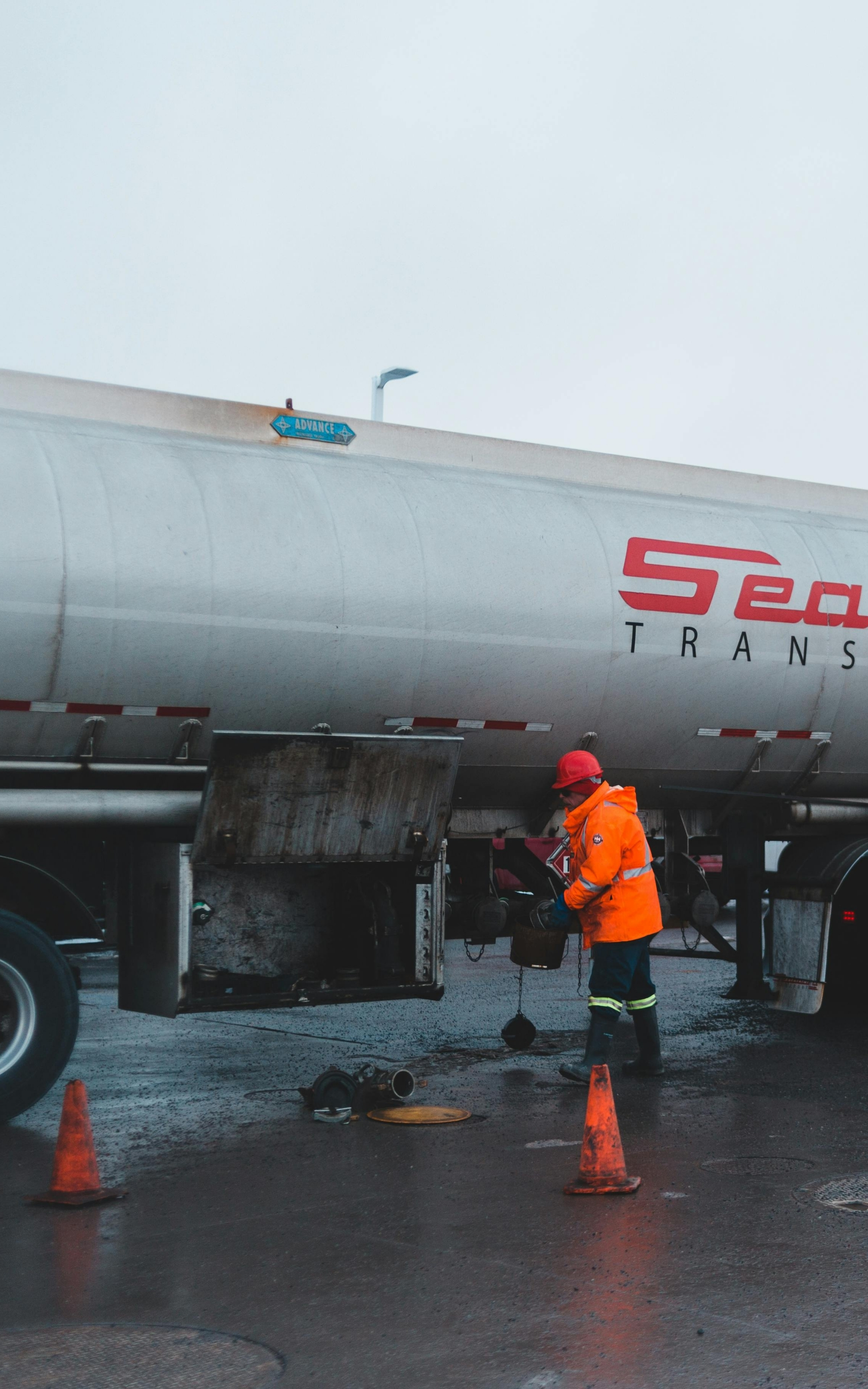Modes of Oil and Gas Transportation
Rail Transport
Rail Transport in Logistics refers to the movement of goods and materials over long distances using trains on railway networks. It is a cost-effective, efficient, and environmentally friendly mode of transportation that plays a crucial role in supply chain operations. Rail transport is typically used for bulk commodities such as coal, steel, minerals, and agricultural products, as well as intermodal freight (containers) that can be transferred between trucks, ships, and trains. In logistics, rail transport provides reliable transit times, high capacity for cargo, and is ideal for long-haul routes where speed and consistency are essential.
Advantages of Rail Transport
-
Cost-effective for medium distances.
-
Can transport large volumes of oil and gas.
-
Less affected by weather conditions.
Tank Car Regulations
Goods2load’s logistics partners ensure compliance with stringent tank car regulations to ensure the safe transport of oil and gas.
-
Regular inspections and maintenance
-
Use of double-hulled cars for added protection
-
Compliance with federal and state guidelines
Tanker Trucks
Tanker trucks are commonly used for short-distance transportation and last-mile delivery of oil and gas products.
These are used for shorter distances or when delivering oil and gas to specific locations such as gas stations or industrial sites. Goods2load connects clients with logistics partners who specialize in tanker truck transportation.
Flexibility and Accessibility
Tanker trucks offer unmatched flexibility and accessibility, making them ideal for reaching remote locations and urban areas.
Safety Protocols
Goods2load’s logistics partners follow strict safety protocols to ensure the safe transportation of oil and gas by tanker trucks.
-
Regular vehicle inspections.
-
Driver training and certification.
-
Emergency response plans.
Last-Mile Delivery
Tanker trucks play a crucial role in last-mile delivery, ensuring oil and gas products reach their final destinations.
-
Direct delivery to consumers.
-
Coordination with other transportation modes.
-
Timely and efficient service.
Marine Transport
Marine transport is essential for moving large quantities of oil and gas across oceans and seas. Marine transport is widely used for heavy, bulky, and non-perishable commodities such as crude oil, gas, coal, grains, machinery, and containerized goods.
Marine transport offers cost-effective long-distance shipping, enabling businesses to move goods between continents.
Oil Tankers and LNG Carriers
-
Large capacity for bulk transport.
-
Logistics partners provide specialized storage and handling systems.
-
Compliance with international maritime regulations.
Maritime Routes
Goods2load’s logistics partners carefully plan maritime routes to ensure the safe and efficient transport of oil and gas.
-
Use of established shipping lanes.
-
Coordination with port authorities.
-
Monitoring of weather conditions.
Port Facilities
Goods2load connects clients with logistics partners who manage port facilities, providing the necessary infrastructure for loading and unloading oil and gas.
-
Storage tanks and pipelines
-
Docking and mooring facilities
-
Safety and security measures
Midstream Operations in Oil and Gas Transportation
Storage Facilities
Storage facilities are a crucial part of midstream operations, providing temporary storage for oil and gas. Our logistics partners manage these facilities.
-
Large capacity for bulk storage.
-
Advanced monitoring and control systems.
-
Compliance with safety and environmental regulations.
Distribution Centers
Distribution centers managed by Goods2load’s logistics partners facilitate the efficient distribution of oil and gas products to end-users.
-
Strategic locations for optimal coverage
-
Coordination with transportation modes
-
Real-time tracking and monitoring
Terminal Operations
Terminal operations involve the loading and unloading of oil and gas products. Goods2load connects clients with logistics partners who ensure the safe and efficient transfer between transportation modes.
-
Use of advanced equipment and technology
-
Strict safety and security measures
-
Coordination with port and rail authorities
Regulatory Framework for Oil and Gas Transportation
Federal Regulations
Federal regulations govern the transportation of oil and gas, ensuring safety, environmental protection, and fair competition.
-
Compliance with the Department of Transportation (DOT) guidelines
-
Adherence to the Pipeline and Hazardous Materials Safety Administration (PHMSA) standards
-
Regular audits and inspections
State and Local Guidelines
Our logistics partners comply with state and local guidelines that address region-specific concerns.
-
Coordination with state transportation agencies
-
Compliance with local environmental regulations
-
Community engagement and consultation
International Standards
Goods2load’s logistics partners adhere to international standards, ensuring the safe and efficient transportation of oil and gas across borders.
-
Adherence to International Maritime Organization (IMO) regulations
-
Compliance with International Air Transport Association (IATA) guidelines
-
Participation in global safety initiatives
Economic Aspects of Oil and Gas Transportation
Cost Factors
Several cost factors, including fuel prices, labor costs, and infrastructure investments, influence the economics of oil and gas transportation.
-
Fluctuations in fuel prices
-
Labor and maintenance costs
-
Investment in transportation infrastructure
Market Dynamics
Market dynamics, such as supply and demand, geopolitical factors, and technological advancements, impact the oil and gas transportation industry.
-
Changes in global oil prices
-
Impact of geopolitical events
-
Adoption of new technologies
Investment in Infrastructure
Investment in infrastructure is crucial for ensuring the efficiency and reliability of oil and gas transportation.
-
Development of new pipelines and terminals
-
Upgrading existing infrastructure
-
Investment in advanced technologies



